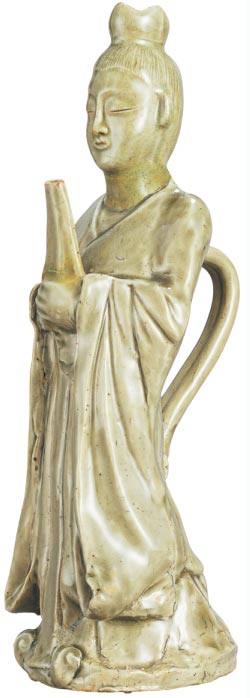 |
|
An ongoing exhibition, Graces of Song Wares, features ceramic, gold, silver, bronze and lacquer items from Hong Kong collector Mak Po-tai's trove. [Photo/China Daily] |
"Porcelain of the Qing Dynasty (1644-1911) looks quite vibrant in terms of color, which has been attributed to technical improvements and aesthetic impact from overseas. Song ware in comparison looks quite simple with very little color, and sometimes only one. But I feel it best represents the Chinese character of being modest and keeping a low profile."
Mak's enthusiasm for the Song dynasty is not limited only to tea sets but extends to the philosophy of life of the Song people.
Through Mak's collection one gets a picture of how four leisure activities filled the lives of the Song people, who lived a thousand years ago, especially the shi da fu or the scholar-officials who formed the bedrock of the Song empire.
They engaged in the art of burning incense sticks, making tea, presenting paintings and arranging flowers, and his collection showcases the tools they used to carry out these activities to attain cultural refinement.
"People's lives were not only about studying and excelling in exams. They also needed time to learn musical instruments, calligraphy and painting and develop other interests," he says.
He adds that such a life philosophy endured in successive dynasties, too.
For example, people in the Ming Dynasty would keep an hour aside for sword fights before the tea appreciation party.
The tea sets Mak collects also show the different ways of preparing and drinking tea by different social ranks-from the nobility and scholar-bureaucrats to the working class.
He says though it seems that the ancient Chinese were easy-going, they were very focused and serious about their leisure activities.